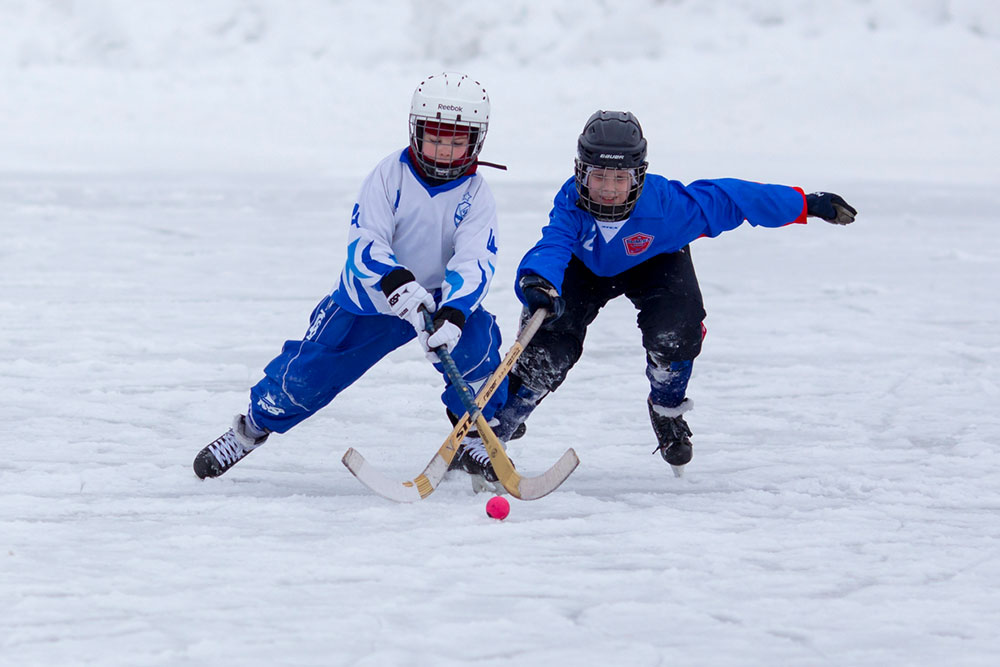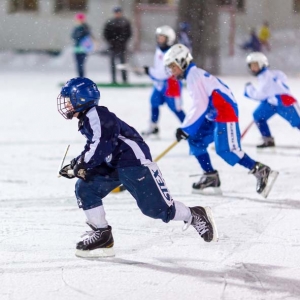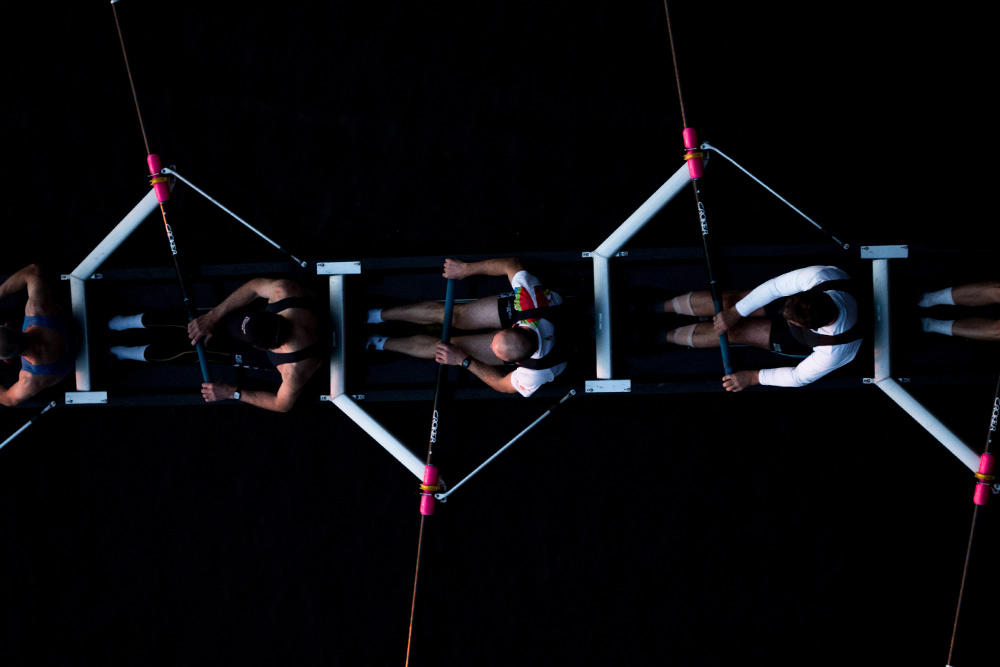Concussions in Youth Ice Hockey

Catherine O’Brien
The brain is surrounded and protected by cerebrospinal fluid (CSF). A concussion occurs when the brain is jolted as a result of a blow to the head, quick acceleration or deceleration.
The Center for Disease Control and Prevention defines concussion as “a type of traumatic brain injury (TBI) caused by a bump, blow or jolt to the head or by a hit to the body that causes the head and brain to move rapidly back and forth” (CDC, Concussion, 2016).
Concussion is considered to be a minor brain injury but it should be taken seriously and treated immediately. Radhakrishnan et al. (2016) discuss concussion related symptoms as falling into three primary categories.
1. Somatic Symptoms
Headache, nausea, vomiting, fatigue and ringing in the ears etc.
2. Cognitive Symptoms
Difficulty concentrating and remembering, feeling slowed down or as if in a fog.
3. Affective Symptoms
Increased irritability, sadness, sleep disturbances and anxiety.
*It is important to note that some symptoms may not present right away so it is best to air on the side of caution and pursue medical assistance when you or someone you know has sustained a head injury.
In the review entitled The Era of Sport Concussion: Evolution of knowledge, practice and the role of psychology, Guay, Lebretore et al (2016) discuss key risk factors for concussion including participation in contact sports, previous injury and genetic factors, specifically the presence of apolipoprotein E (APOE) rare alleles.
Because this topic is so extensive, I am going to break it up into three articles. This first article will focus on the risk associated with contact sports and a specific study on the efficacy of measures being taken to decrease concussion incidence in youth hockey players. In subsequent articles I will discuss research on the role of previous injury and the role of genetics on concussion.
The Good and The Bad
The Center for Disease Control and Prevention reported that while deaths resulting from traumatic brain injury (TBI) have declined, emergency department visits for TBI and concussion have increased from 2001 to 2010. According to the MayoClinic, participation in contact sports greatly increases risk for concussion. Research conducted by Castile, Collins, Mcllvain and Comstock (2011) corroborated this fact and found that football, men’s and women’s soccer and women’s basketball were associated with the highest rates of concussion in a study of high school athletes (Castile et al. 2011).
While ice hockey is not the number one offender when it comes to sports-related concussion, the risk of concussion is still very real for ice hockey players. Research discussed by Izraelski, J. (2014) estimated that concussions account for between 2-14% of all hockey injuries and between 15-30% of all hockey head injuries. Statistics provided by USA Hockey and Hockey Canada indicate that participation in ice hockey is increasing year over year. As such, it is no surprise that concussion incidence in youth hockey players is being investigated.
Zero Tolerance for Head Contact
 Krolikowski et al. examined the impact of the “Zero Tolerance for Head Contact” rule in youth hockey and whether this rule was effective. The rule was put in place following the nationwide adoption of a rule which delayed body checking in youth hockey games until players were 13 years old. According to work referenced by Krolikowski et al (2017), body checking is a leading cause of concussion in the sport and prohibiting this for Pee Wee teams had protective effects in reducing concussion among this population of players.
Krolikowski et al. examined the impact of the “Zero Tolerance for Head Contact” rule in youth hockey and whether this rule was effective. The rule was put in place following the nationwide adoption of a rule which delayed body checking in youth hockey games until players were 13 years old. According to work referenced by Krolikowski et al (2017), body checking is a leading cause of concussion in the sport and prohibiting this for Pee Wee teams had protective effects in reducing concussion among this population of players.
The “Zero Tolerance Head Contact” rule, also known as rule 6.5, was enacted in 2011 with the intention of reducing the incidence of concussion and similar injuries in youth hockey. The rule penalizes players for any intentional or unintentional contact above the shoulders. The goal of the retrospective study was to examine if Pee Wee (11-12 years old) and Bantam (13-14 years old) hockey players had reduced incidence of concussion following the implementation of rule 6.5.
This retrospective study gathered data from Pee Wee teams and Bantam Teams pre and post implementation of rule 6.5. Various data points were collected on each of the 2,099 Pee Wee and Bantam players including prior medical history (pre-season), daily hockey participation and concussion data.
Injury reports
were filed for every injury that occurred and reports were validated by an athletic or physical therapist. Injury reports included details about the injury including the source of the injury, circumstances surrounding the injury and the mechanisms involved. For example, was the injury caused by head to head contact, contact with the boards, contact with the ice or puck etc. The study differentiated between game-related concussions and more severe-game related concussions where severe concussions were defined as causing > 10-day time loss.
The Results
Unfortunately, results indicated an increased incidence of concussion in Pee Week and Bantam youth hockey following the implementation of rule 6.5. Furthermore, a greater percentage of concussions sustained in the post rule period were classified as severe. These results suggest that players were at a greater risk for concussion following the implementation of the rule compared to Pee Wee and Bantam players prior to rule implementation.
Of course, the study does consider some extraneous factors that could be a source of these results. For example, it is possible that with the increased attention and concern surrounding concussion in youth sport, more concussions were reported and diagnosed in the more recent seasons compared to the pre-rule seasons.
Takeaway
While the results of Krolikowski’s study are slightly disheartening, we cannot say for sure that the implementation of the rule caused increased concussion. Rather, as they point out, there are other factors at play that could have caused these results. Either way, it is clear that sports-related concussions are a serious problem in sports at all levels and rules should continue to be put in place and tested in order to improve outcomes for players.
It is the responsibility of the athletic and scientific community to continue to monitor and test the efficacy of these rules to work towards an effective solution and decrease the incidence of sports-related concussion.
References:
Guay, J.L., Lebretore, B.M., Main, J.M. et al. (2016) The era of sport concussion: Evolution of knowledge, practice and the role of psychology. American Psychologist, 71(9), 875-887.
Izeaelski, J. (2014) Concussions in the NHL: A narrative review of the literature. The Journal of the Canadian Chiropractic Association, 58(4).
Krolikowski, M.P., Black, A.M., Palacios-Derflingher, L., et al. (2017) The effect of the “Zero Tolerance for Head Contact” rule change on the risk of concussions in youth ice hockey players. The American Journal of Sports Medicine, 45(2), 468-473.
Radhakrishnan, R., Carakani, A., Gross, L, et al. (2016) Neuropsychiatric aspects of concussion. Lancet Psychiatry, 3, 1166-75.
Centers for Disease Control and Prevention (2016). Traumatic Brain Injury & Concussion. Retrieved February 16, 2017, from https://www.cdc.gov/traumaticbraininjury/get_the_facts.html & https://www.cdc.gov/traumaticbraininjury/data/rates.html
The Mayo Clinic (2016) Concussion: Symptoms and causes. Retrieved February 16, 2017, from http://www.mayoclinic.org/diseases-conditions/concussion/symptoms-causes/dxc-20273155
The United States of Hockey (2014). U.S Hockey Participation Numbers for 2013-14. Retrieved February 16, 2017, from https://unitedstatesofhockey.com/2014/06/17/u-s-hockey-participation-numbers-for-2013-14/
Hockey Canada (2017). Statistics and history. Retrieved on February 16, 2017 from https://www.hockeycanada.ca/en-ca/Hockey-Programs/Female/Statistics-History.aspx
You Might Like:










